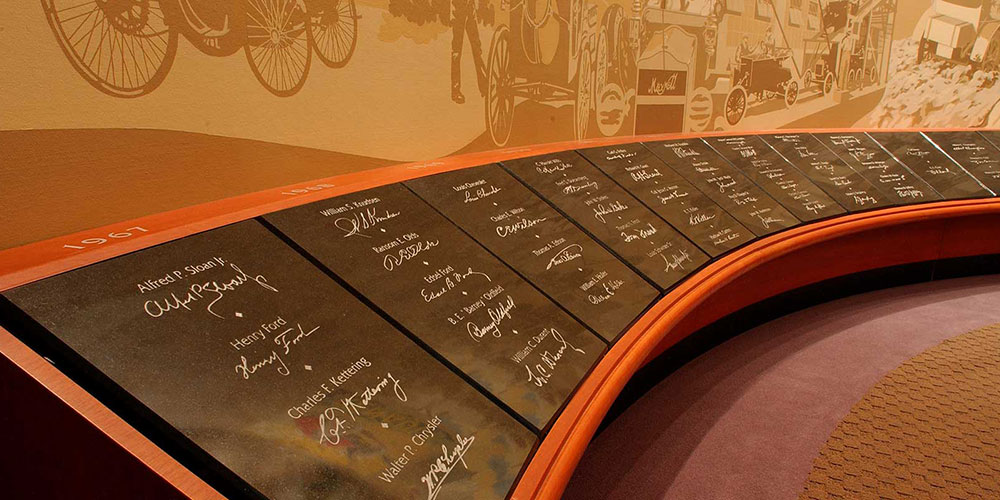By Robert Tate, Automotive Historian and Researcher
Images courtesy of the National Automotive History Collection and Internet sources
Posted: 04.04.2017
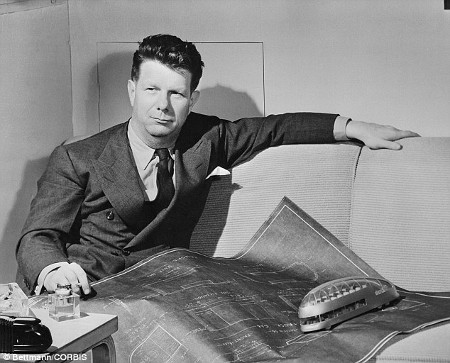 Norman Bel Geddes at drafting table | Photo courtesy of Daily Mail UKArtist and visionary Norman Bel Geddes (1893-1958) was a pioneer in the world of industrial design. A native of Adrian, Michigan, Bel Geddes would go on to stamp his name into the creative design industry by producing highly futuristic and distinctive pieces from 1920-1940.
Norman Bel Geddes at drafting table | Photo courtesy of Daily Mail UKArtist and visionary Norman Bel Geddes (1893-1958) was a pioneer in the world of industrial design. A native of Adrian, Michigan, Bel Geddes would go on to stamp his name into the creative design industry by producing highly futuristic and distinctive pieces from 1920-1940.
Bel Geddes designed automobiles, airplanes, ocean liners, trains, trucks and even great architecture for the new modern times. In the beginning, Mr. Bel Geddes developed a strong passion and a great relationship within the theater and illustrated some of its great designs.
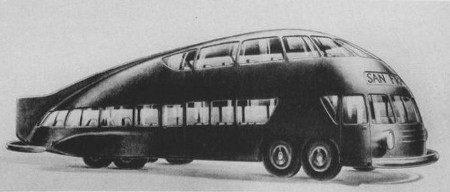 Photo courtesy of Hemmings.comIn 1927, however, his creative thinking shifted toward automotive. He began to design many great looking concepts that would be called futuristic designs and many people loved them.
Photo courtesy of Hemmings.comIn 1927, however, his creative thinking shifted toward automotive. He began to design many great looking concepts that would be called futuristic designs and many people loved them.
The automobiles had very streamlined, conceptual looks setting them far afield from other design works at the time. Mr. Bel Geddes believed that art as well as architecture and design could improve peoples’ emotional well-being.
Over the years, his creative design ideas had placed him inside the pages of many great history books, which people have thoroughly enjoyed as reference material for future generations.
On a personal note, I have always admired his work. Mr. Bel Geddes’ artwork was so impressive that it caught the attention of the late Ray Graham of Graham-Paige automobiles. His first assignment was to design some futuristic streamlined automobiles for the Graham-Paige automobile company. Later, during the early 1930s, Bel Geddes had received a contract to style Chrysler models which led him to redesign the Chrysler Airflow models.
The Chrysler Airflow cars did not respond very well in the consumer market and were eventually pulled from production. Bel Geddes quickly had proposed a great number of Chrysler and De Soto designs that were intended as the “Hurry up changes.”
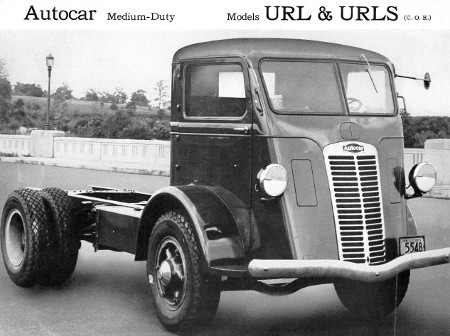 Photo courtesy of the National Automotive History Collection.Later, the Autocar truck Corporation hired Bel Geddes. His goal at the time was to design a line of trucks with a more massive front-end look that would appeal to the truck market. Streamline designs was thought to be the wave of the future. Streamlining and aerodynamics changed the way engineers looked at automobile/truck designs and by the late 1930s, streamline design had become a part of our American culture and style.
Photo courtesy of the National Automotive History Collection.Later, the Autocar truck Corporation hired Bel Geddes. His goal at the time was to design a line of trucks with a more massive front-end look that would appeal to the truck market. Streamline designs was thought to be the wave of the future. Streamlining and aerodynamics changed the way engineers looked at automobile/truck designs and by the late 1930s, streamline design had become a part of our American culture and style.
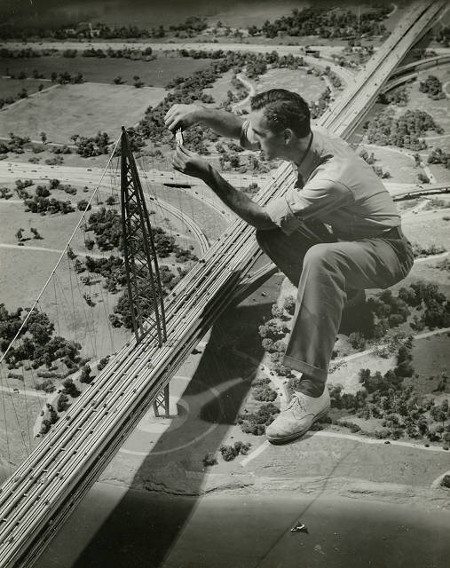 Norman Bel Geddes working on the 1939 World’s Fair project, “Futurama.”During the late 1930s, as his journey would continue, Bel Geddes was asked to create and envision a Shell Oil project that was going to be the city of the future. Bel Geddes had become the urban visionary on the city of the future and he created many new and interesting ideas.
Norman Bel Geddes working on the 1939 World’s Fair project, “Futurama.”During the late 1930s, as his journey would continue, Bel Geddes was asked to create and envision a Shell Oil project that was going to be the city of the future. Bel Geddes had become the urban visionary on the city of the future and he created many new and interesting ideas.
Bel Geddes would later promote his great idea “Cities of the future” project to General Motors and to the late Alfred P. Sloan Jr. along with other GM executives at the time - Richard Grant and William S. Knudsen. Ironically, Knudsen had already turned down the project for unknown reasons but later supported Bel Geddes’ plan. It was Sloan, however, who liked the idea of Bel Geddes and the futuristic vision of this great new city of tomorrow.
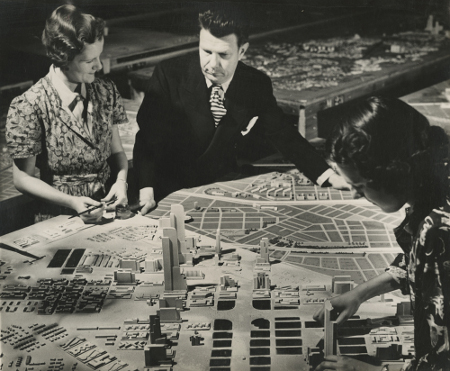 Bel Geddes working on the 1939 Futurama exhibit | Photo courtesy of Vanity Fair.Later, Bel Geddes would receive the contract to design the GM Futurama exhibit for the 1939 New York World’s Fair. The presentation was a great success with many Americans coming to see this grandiose vision of life in the future.
Bel Geddes working on the 1939 Futurama exhibit | Photo courtesy of Vanity Fair.Later, Bel Geddes would receive the contract to design the GM Futurama exhibit for the 1939 New York World’s Fair. The presentation was a great success with many Americans coming to see this grandiose vision of life in the future.
The Futurama exhibit showcased 5,000 tiny buildings along with 10,000 little trees moving along on automated highways and streets. The exhibit was fantastic and more than 10 million visitors to the World’s Fair went to see Bel Geddes’ creation.
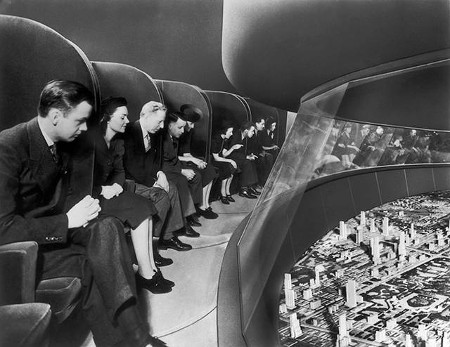 Visitors to the 1939 World's Fair looking at Bel Geddes’ Futurama exhibit | Photo courtesy of Guyletter.comThe exhibit was called “Highways and Horizons” and it was located at the pavilion. The visitors who had attended this event received a souvenir pin proclaiming, “I have seen the future.” On Sept. 10, 1940, Bel Geddes signed a contract with Nash Kelvinator to design products for the company. He created design work on projected post-war Nash models such as the Nash 600 – a new compact style car.
Visitors to the 1939 World's Fair looking at Bel Geddes’ Futurama exhibit | Photo courtesy of Guyletter.comThe exhibit was called “Highways and Horizons” and it was located at the pavilion. The visitors who had attended this event received a souvenir pin proclaiming, “I have seen the future.” On Sept. 10, 1940, Bel Geddes signed a contract with Nash Kelvinator to design products for the company. He created design work on projected post-war Nash models such as the Nash 600 – a new compact style car.
During the late 1940s, Bel Geddes would move on and developed a working relationship with the IBM Corporation. His journey started with redesigning several trademark electric typewriters, office furniture and two trucks for cross-country traveling.
Bel Geddes in 1946 suffered a heart attack and later he would dismantle his relationship with his design team and staff. From 1945-1958, Bel Geddes worked on many unfinished autobiography books. Unfortunately, Norman Bel Geddes passed away on May 8, 1958.
In-conclusion, Norman Bel Geddes will always have a strong legacy in the automotive world and his popular books “I have seen the future: Norman Bel Geddes Designs America” and “Norman Bel Geddes Designs America” are still very popular books to read.


